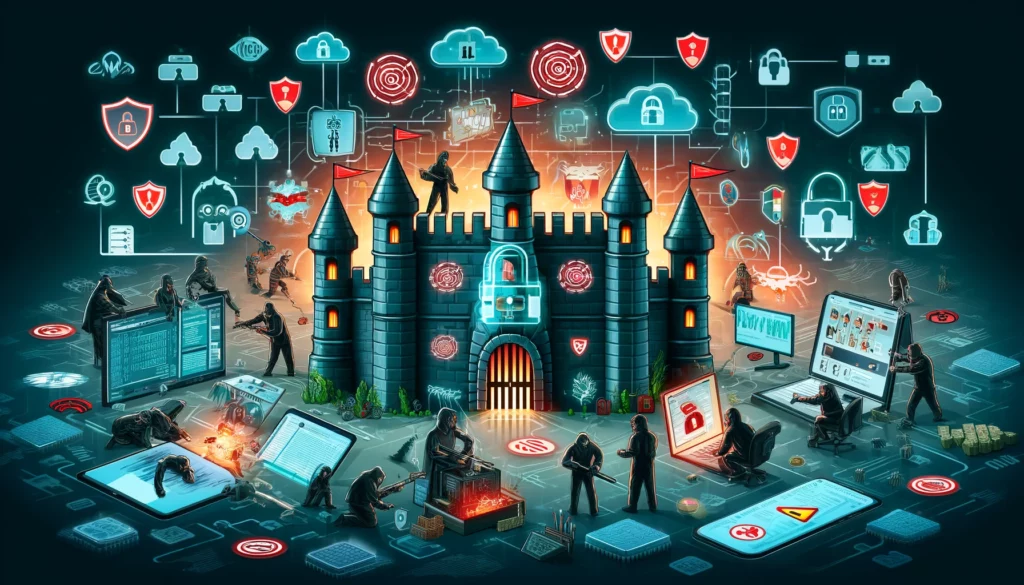In today’s digitally driven world, cybersecurity threats are constantly evolving, posing significant risks to organizations of all sizes and industries. From sophisticated cyberattacks to common vulnerabilities, businesses must be vigilant in defending against a wide range of threats to protect sensitive data, maintain operational continuity, and safeguard their reputation. In this blog post, we’ll explore some of the most prevalent cybersecurity threats and provide practical strategies for defending against them.
Phishing Attacks
Phishing attacks involve the use of deceptive emails, messages, or websites to trick individuals into divulging sensitive information such as login credentials, financial details, or personal data. These attacks often exploit human psychology and trust to bypass traditional security measures.
Defense Strategy: Educate employees about the signs of phishing attacks, such as suspicious URLs, unexpected attachments, and requests for sensitive information. Implement email filtering solutions and multi-factor authentication to mitigate the risk of phishing attacks.
Ransomware
Ransomware is a type of malicious software that encrypts a victim’s files or systems, rendering them inaccessible until a ransom is paid. Ransomware attacks can cause significant disruption to business operations and result in financial losses and reputational damage.
Defense Strategy: Regularly backup critical data and systems to offline or cloud-based storage solutions. Implement robust endpoint security measures, such as antivirus software and intrusion detection systems, to detect and block ransomware threats before they can execute.
Insider Threats
Insider threats involve malicious or negligent actions by individuals within an organization, such as employees, contractors, or partners, who misuse their access privileges to steal data, sabotage systems, or compromise security.
Defense Strategy: Implement strict access controls and least privilege principles to limit employees’ access to sensitive data and systems based on their roles and responsibilities. Monitor user activities and behaviors for signs of suspicious or unauthorized actions, and provide ongoing security awareness training to employees.
Distributed Denial of Service (DDoS) Attacks
DDoS attacks involve flooding a target system or network with an overwhelming volume of traffic, causing it to become slow or unresponsive and disrupting normal operations. DDoS attacks can be used to extort money, disrupt services, or undermine competitors.
Defense Strategy: Deploy DDoS mitigation solutions, such as web application firewalls and traffic filtering services, to detect and mitigate DDoS attacks in real-time. Implement network redundancy and scalable infrastructure to absorb and mitigate the impact of DDoS traffic spikes.
Zero-Day Exploits
Zero-day exploits refer to vulnerabilities in software or hardware that are unknown to the vendor and have no available patches or fixes. Cybercriminals can exploit these vulnerabilities to launch targeted attacks against organizations before security patches are developed and deployed.
Defense Strategy: Stay informed about emerging threats and vulnerabilities through threat intelligence feeds, security advisories, and vendor notifications. Implement proactive security measures, such as intrusion prevention systems and security updates, to detect and mitigate zero-day exploits.
Conclusion
Cybersecurity threats are a persistent and ever-changing challenge for organizations worldwide. By understanding the nature of common threats and implementing proactive defense strategies, businesses can effectively mitigate their risks and protect against potential cyberattacks. From educating employees about phishing risks to deploying advanced security technologies, a multi-layered approach to cybersecurity is essential for safeguarding sensitive data, preserving operational continuity, and maintaining trust with customers and stakeholders. By staying vigilant and proactive, organizations can stay one step ahead of cyber threats and maintain a strong security posture in today’s digital landscape.

